Post written in response to Tanja Tuma’s piece on a Frankfurt Book Fair panel asking the same question This is a question I have tried to highlight at every publishing workshop I lead. Are there too many books published today? But every time we, as a group, or as publishers and authors individually, try to answer this question, we come up with wildly different responses—yes, the rate of publishing is eclipsing the rates of reading and buying; no, there could never be too many books in the world; yes, print runs are shrinking every year; no, readers are still struggling to find great books. These diverse responses, I believe, stem from an incomplete question.
Are we asking:
• Are there too many books published today for first-time, self-published authors to be profitable?
• Are there too many books published today for good books to be found by good, traditional publishers?
• Are there too many books published today for small publishing houses to support even limited print runs?
• Are there too many books published today for readers to easily discover new books?
These are all pertinent questions. I’ll focus on the first question, as it is the most relevant to those who attend my publishing workshops and to our potential clients.
Are there too many books published today for first-time, self-published authors to be profitable.
I’ll say this much: it’s tough. Supply has outstripped demand. Tuma quotes author Gabriel Zaid, who observed “the reading of books is growing arithmetically; the writing of books is growing exponentially.”
Here’s how it breaks down:
Supply: There were 1 million published books in 2003 at the time of Zaid’s quote, and as of 2013 there are 28 million. The self-publishing industry alone has increased by over 436 percent since 2008, with 458,564 new titles in 2013 alone (and these numbers only account for those self-published books that actually acquired ISBN numbers, as tracked by Bowker).
In 2013 alone, there were 304,912 print books published by traditional publishing houses and just over 1 million print books produced in the non-traditional sector (print-on-demand, reprints, self-published books, etc.). Add to these figures e-books in both the traditional and non-traditional sectors of the market, and the figures are overwhelming.
Demand: American reading habits have declined over the last three decades. A Gallup poll in 1978 found that 42 percent of adults had read 11 books or more in the past year and that 13 percent had actually read more than 50 in the past year, but Pew’s report from 2014 shows that only 28 percent had read over 11 books in the last year, and nearly 25 percent hadn’t read a single book in the last year (contrasted to 8 percent reporting in 1978 that they hadn’t read a book in the past year).
The verdict: Both traditional authors and self-published authors are struggling to make a living off of writing. A survey presented at the 2014 Digital Book World Conference reported that 54 percent of traditionally published authors and almost 80 percent of self-published authors are earning less than $1,000 a year.
Is this a reason not to publish your book?
No.
It is, however, a reason not to publish your book for the money. A small portion of traditionally published and self-published authors will earn enough from their writing to make a living, but the vast majority will need to have a separate—and steady—source of income to support their writing. There are dozens of other reasons to publish—to establish authority in your field, to share your personal history with family and friends, to celebrate a milestone or anniversary, to see your passion in print, etc.—but fame and riches should not rank in the top ten.



